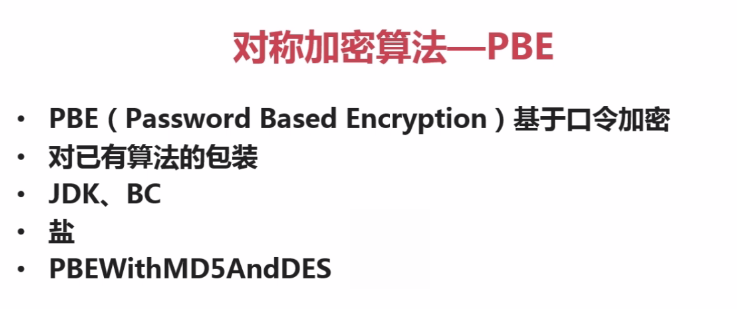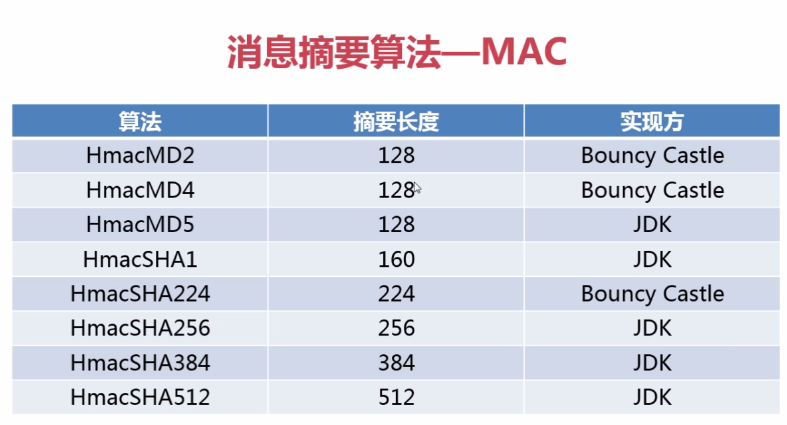1.
加密算法大全:
**********************************************************************************************************************





**********************************************************************************************************************
1.非对称加密算法:
DH : Diffie–Hellman key exchange : Diffie-Hellman 密钥交换
Diffie–Hellman (DH) algorithms
Diffie–Hellman key exchange (D–H) is a specific method of securely exchanging cryptographic keys over a public channel and was one of the first public-key protocols as originally conceptualized by Ralph Merkle. D–H is one of the earliest practical examples of public key exchange implemented within the field of cryptography.
https://en.wikipedia.org/wiki/Diffie%E2%80%93Hellman_key_exchange
ECDH : Elliptic curve Diffie–Hellman 椭圆曲线Diffie-Hellman密钥交换
Elliptic curve Diffie–Hellman (ECDH) is an anonymous key agreement protocol that allows two parties, each having an elliptic curve public–private key pair, to establish a shared secret over an insecure channel.[1][2][3] This shared secret may be directly used as a key, or to derive another key which can then be used to encrypt subsequent communications using a symmetric key cipher. It is a variant of the Diffie–Hellman protocol using elliptic curve cryptography.
https://en.wikipedia.org/wiki/Elliptic_curve_Diffie%E2%80%93Hellman
ElGamal :
In cryptography, the ElGamal encryption system is an asymmetric key encryption algorithm() for public-key cryptography which is based on the Diffie–Hellman key exchange. It was described by Taher Elgamal in 1985.
ElGamal encryption is used in the free GNU Privacy Guard software, recent versions of PGP, and other cryptosystems. The Digital Signature Algorithm is a variant of the ElGamal signature scheme, which should not be confused with ElGamal encryption.
https://en.wikipedia.org/wiki/ElGamal_encryption
ECC : Elliptic Curve Cryptography
Elliptic curve cryptography (ECC) is an approach to public-key cryptography based on the algebraic structure of elliptic curves over finite fields. ECC requires smaller keys compared to non-ECC cryptography (based on plain Galois fields) to provide equivalent security.
https://en.wikipedia.org/wiki/Elliptic_curve_cryptography
RSA :
RSA公钥加密算法是1977年由Ron Rivest、Adi Shamirh和Leonard Adleman在(美国麻省理工学院)开发的。RSA取名来自开发他们三者的名字。
RSA is made of the initial letters of the surnames of Ron Rivest, Adi Shamir, and Leonard Adleman, who first publicly described the algorithm in 1977.
http://www.emc.com/corporate/about-rsa/index.htm
https://en.wikipedia.org/wiki/RSA
DSA : Digital Signature Algorithm 数字签名算法
The Digital Signature Algorithm (DSA) is a Federal Information Processing Standard for digital signatures.
https://en.wikipedia.org/wiki/Digital_Signature_Algorithm
ECDSA : Elliptic Curve Digital Signature Algorithm 椭圆曲线数字签名算法
In cryptography, the Elliptic Curve Digital Signature Algorithm (ECDSA) offers a variant of the Digital Signature Algorithm (DSA) which uses elliptic curve cryptography.
https://en.wikipedia.org/wiki/Elliptic_Curve_Digital_Signature_Algorithm
DSS : ?
Digital Signature Standard 数字签名标准 || Digital Signature Services
Digital Signature Standard (DSS)
The Digital Signature Algorithm (DSA) is a Federal Information Processing Standard for digital signatures. It was proposed by the National Institute of Standards and Technology (NIST) in August 1991 for use in their Digital Signature Standard (DSS) and adopted as FIPS 186 in 1993.[1] Four revisions to the initial specification have been released: FIPS 186-1 in 1996,[2] FIPS 186-2 in 2000,[3] FIPS 186-3 in 2009,[4] and FIPS 186-4 in 2013.
https://en.wikipedia.org/wiki/Digital_Signature_Algorithm
||
Digital Signature Services (DSS) is an OASIS standard.
The Digital Signature Services (DSS) specifications describe two XML-based request/response protocols – a signing protocol and a verifying protocol. Through these protocols a client can send documents to a server and receive back a signature on the documents; or send documents and a signature to a server, and receive back an answer on whether the signature verifies the documents. The DSS Core specifications provide the basic protocols and elements which are adapted to support specific use cases in the DSS profiles.
https://en.wikipedia.org/wiki/Digital_Signature_Services
**********************************************************************************************************************













**********************************************************************************************************************
2.对称加密算法:
DES : Data Encryption Standard 数据加密标准
The Data Encryption Standard (DES, /ˌdiːˌiːˈɛs/ or /ˈdɛz/) was once a predominant symmetric-key algorithm for the encryption of electronic data. It was highly influential in the advancement of modern cryptography in the academic world.
https://en.wikipedia.org/wiki/Data_Encryption_Standard
3DES :(Triple DES):密码学中,3DES(或称为Triple DES)是三重数据加密算法(TDEA,Triple Data Encryption Algorithm)块密码的通称.
In cryptography, Triple DES (3DES) is the common name for the Triple Data Encryption Algorithm (TDEA or Triple DEA) symmetric-key block cipher, which applies the Data Encryption Standard (DES) cipher algorithm three times to each data block.
https://en.wikipedia.org/wiki/Triple_DES
AES:Advanced Encryption Standard 高级加密标准
The Advanced Encryption Standard (AES), also known as Rijndael[4][5] (its original name), is a specification for the encryption of electronic data established by the U.S. National Institute of Standards and Technology (NIST) in 2001.
https://en.wikipedia.org/wiki/Advanced_Encryption_Standard
PBE : Password Based Encryption
Password-based cryptography generally refers to two distinct classes of methods:
- Single-party methods
- Multi-party methods
https://en.wikipedia.org/wiki/Password-based_cryptography
IDEA: International Data Encryption Algorithm
In cryptography, the International Data Encryption Algorithm
(IDEA), originally called Improved Proposed Encryption Standard (IPES),
is a symmetric-key block cipher designed by James Massey of ETH Zurich
and Xuejia Lai and was first described in 1991. The algorithm was
intended as a replacement for the Data Encryption Standard (DES). IDEA
is a minor revision of an earlier cipher, Proposed Encryption Standard
(PES).
https://en.wikipedia.org/wiki/International_Data_Encryption_Algorithm
**********************************************************************************************************************
1





**********************************************************************************************************************
3.消息摘要算法:
MD5 : Message-Digest Algorithm 5 消息摘要算法5
The MD5 message-digest algorithm is a widely used cryptographic hash function producing a 128-bit (16-byte) hash value, typically expressed in text format as a 32 digit hexadecimal number. MD5 has been utilized in a wide variety of cryptographic applications, and is also commonly used to verify data integrity.
https://en.wikipedia.org/wiki/MD5
SHA : Secure Hash Algorithm
The Secure Hash Algorithm is a family of cryptographic hash functions published by the National Institute of Standards and Technology (NIST) as a U.S. Federal Information Processing Standard (FIPS), including:
SHA-0: A retronym applied to the original version of the 160-bit hash function published in 1993 under the name "SHA". It was withdrawn shortly after publication due to an undisclosed "significant flaw" and replaced by the slightly revised version SHA-1.
SHA-1: A 160-bit hash function which resembles the earlier MD5 algorithm. This was designed by the National Security Agency (NSA) to be part of the Digital Signature Algorithm. Cryptographic weaknesses were discovered in SHA-1, and the standard was no longer approved for most cryptographic uses after 2010.
SHA-2: A family of two similar hash functions, with different block sizes, known as SHA-256 and SHA-512. They differ in the word size; SHA-256 uses 32-bit words where SHA-512 uses 64-bit words. There are also truncated versions of each standard, known as SHA-224, SHA-384, SHA-512/224 and SHA-512/256. These were also designed by the NSA.
SHA-3: A hash function formerly called Keccak, chosen in 2012 after a public competition among non-NSA designers. It supports the same hash lengths as SHA-2, and its internal structure differs significantly from the rest of the SHA family.
The corresponding standards are FIPS PUB 180 (original SHA), FIPS PUB 180-1 (SHA-1), FIPS PUB 180-2 (SHA-1, SHA-256, SHA-384, and SHA-512). NIST has updated Draft FIPS Publication 202, SHA-3 Standard separate from the Secure Hash Standard (SHS).
https://en.wikipedia.org/wiki/Secure_Hash_Algorithm
MAC : Message Authentication Code
In cryptography, a message authentication code (MAC) is a short piece of information used to authenticate a message—in other words, to provide integrity and authenticity assurances on the message. Integrity assurances detect accidental and intentional message changes, while authenticity assurances affirm the message's origin.
https://en.wikipedia.org/wiki/Message_authentication_code
HMAC : keyed-Hash Message Authentication Code 散列消息认证码
In cryptography, a keyed-hash message authentication code (HMAC) is a specific construction for calculating a message authentication code (MAC) involving a cryptographic hash function in combination with a secret cryptographic key. As with any MAC, it may be used to simultaneously verify both the data integrity and the authentication of a message. Any cryptographic hash function, such as MD5 or SHA-1, may be used in the calculation of an HMAC; the resulting MAC algorithm is termed HMAC-MD5 or HMAC-SHA1 accordingly. The cryptographic strength of the HMAC depends upon the cryptographic strength of the underlying hash function, the size of its hash output, and on the size and quality of the key.
https://en.wikipedia.org/wiki/Hash-based_message_authentication_code
**********************************************************************************************************************
4.Base64
Base64:




**********************************************************************************************************************
Other: ?
**********************************************************************************************************************

Pretty Good Privacy (PGP):
Pretty Good Privacy (PGP) is a data encryption and decryption computer program that provides cryptographic privacy and authentication for data communication. PGP is often used for signing, encrypting, and decrypting texts, e-mails, files, directories, and whole disk partitions and to increase the security of e-mail communications. It was created by Phil Zimmermann in 1991.[1]
PGP and similar software follow the OpenPGP standard (RFC 4880) for encrypting and decrypting data.
https://en.wikipedia.org/wiki/Pretty_Good_Privacy
Encrypted Key Exchange (also known as EKE):
Encrypted Key Exchange (also known as EKE) is a family of password-authenticated key agreement methods described by Steven M. Bellovin and Michael Merritt.[1] Although several of the forms of EKE in this paper were later found to be flawed [clarification needed], the surviving, refined, and enhanced forms of EKE effectively make this the first method to amplify a shared password into a shared key, where the shared key may subsequently be used to provide a zero-knowledge password proof or other functions.
https://en.wikipedia.org/wiki/Encrypted_key_exchange
1
**********************************************************************************************************************
xxxxxxxxxxxxxxxx
xxxxxxxxxxxxxxxxxxxxx
xxxxxxxxxxxxxxxxxxxxxxxxxxx